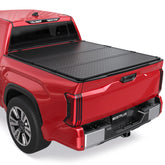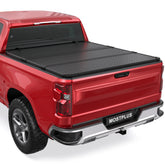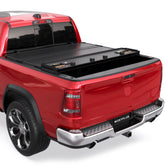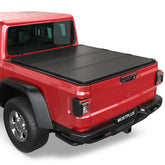How do I replace my brake pads?
Brake pads are the key components of the braking system and are part of the drum or disc brake. Brake pads are essential for slowing and stopping your vehicle and keeping it safe.
Replacing a vehicle's brake pads is a task within the reach of most do-it-yourselfers. Checking the condition of the brake pads is one of the regular checks that should be performed on any vehicle.
What's more, changing your own brake pads is a much cheaper option than taking your car to the shop. By paying only for the materials, you'll be able to brake properly again after following these steps.
Why change your brake pads?
To maintain optimum braking efficiency, it's important to change your brake pads before the pads themselves are completely worn out. Otherwise, the metal of the pad holder will come into direct contact with the brake disc, resulting in :
- Shrill noise when braking
- Ineffective braking
- Disc damage (scratches).

How do I change my brake pads?
- Step 1: Purchase the correct brake pads. Brake pads are available on our website. All you have to do is tell us the year, make, and model of your car and select the pads in your price range.
- Step 2: Make sure your car is cold. If you've just driven, the pads, calipers, and rotors may be extremely hot.
- Step 3: Apply the vehicle's emergency brake. Before performing any work on the brakes or wheels, remember to apply the handbrake to prevent unintentional movement.
- Step 4: Loosen the wheel nuts. Use a wheel wrench to loosen the nuts holding the wheel in place.
- Step 5: Raise the car enough to easily remove the wheel. Raise the car with a jack, making sure to place a wedge between the jack shoe and your chassis. Place a jack stand under the chassis.
- Step 6: Remove the wheel. Remove the wheel nuts completely. You can now remove the wheel.
-
Step 7: Unscrew the brake calipers. Most vehicles are equipped with "floating" calipers that slide on a bracket. Some rear calipers require a special tool to push back the piston to change the pads. However, some sports cars are equipped with "fixed" calipers that do not slide. They are usually bolted directly to the hub carrier.
- For floating calipers: remove the mounting bolts or guide pins. Note the location of the various bushings and positioning parts so that you can replace them in the same place. Save any rubber or plastic protective covers. Remove the caliper from the rotor.
- For fixed calipers: some models allow you to remove the pads from the back of the caliper while it is still bolted in place.
-
Step 8: Push the piston back into the caliper.
- For fixed calipers: use the worn pads before removing them. If the caliper must be removed, push one pad at a time back into the caliper until all pistons are at the bottom of their holes. Use a lever if necessary.
- For floating calipers: it is preferable to remove the caliper to push the piston out. Use a C-clamp and the worn pad to push the piston out. If the rear calipers are equipped with a parking brake mechanism, it is not possible to simply push the piston back. A caliper piston tool must be used to rotate and retract the piston.

- Step 9: Remove the old pads. Notice how each pad is mounted. They are usually nested or stapled together with metal clips. Remove the two pads. You will need to use some force to remove them, so be careful not to damage the caliper or hose when removing them.
- Step 10: Install the new pads. Insert the new pads into their housing in the caliper.
- Step 11: Check brake fluid. Check your vehicle's brake fluid level and top off if necessary. Finally, replace the brake fluid reservoir cap.
- Step 12: Install the caliper. Slowly slide the caliper onto the rotor, taking care not to damage it. Insert and tighten the caliper mounting screws.
- Step 13: Clean the disc with brake cleaner to remove any greasy residue.
- Step 14: Replace the wheel and its nuts.
- Step 15: Tighten the nuts using an impact wrench.
- Step 16: Raise the vehicle with the jack to release the stanchions.
- Step 17: Release the jack and lower the vehicle.
- Step 18: Tighten the wheel nuts to the recommended torque using a torque wrench.
- Step 19: Start the vehicle. Make sure the gear lever is in neutral, and pump the brakes 15 to 20 times to ensure a good seat.
- Step 20: Then perform several brake tests at very low speeds. This will reveal any assembly errors and prevent you from returning your car in less-than-ideal conditions.Drive slowly for the first 200 km as the brake pads are not yet broken in and braking efficiency is reduced. Also, remember to keep larger safety distances.
The goal of this tutorial is to highlight the main stages in the assembly and manufacture of the object it covers. Since this tutorial has been created for guidance only and with a specific type of vehicle in mind, it may not be complete, and, depending on the type of vehicle on which the work is carried out, additional steps may be required and others may need to be adapted for it to be carried out correctly.
Featured Products
- $479.99
$499.99- $479.99
- Unit price
- / per
- $549.99
$549.99- $549.99
- Unit price
- / per
- $489.99
- $489.99
- Unit price
- / per
- $469.99
$489.67- $469.99
- Unit price
- / per














